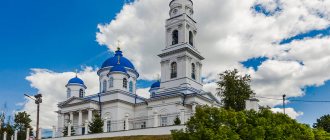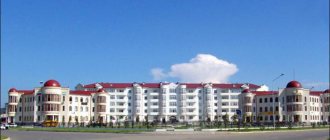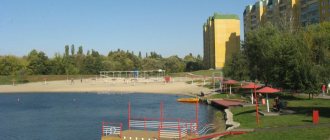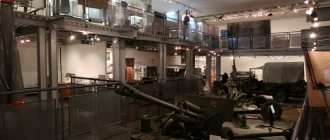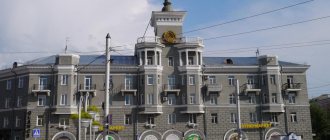About Gubkin
Gubkin is located on the Oskolets River, 20 kilometers from Stary Oskol and 116 km from Belgorod.
The city of miners is one of the stable regions of the Central Federal District and was formed in 1939. The Gubkinsky urban district includes Arkhangelsk, Bobrovodvorskaya, Bogoslovskaya, Vislodubravskaya, Ivanovskaya, Istobnyanskaya, Konshinskaya, Melavskaya, Nikanorovskaya, Oskoletskaya, Saprykinskaya, Sergievskaya, Skorodnyanskaya, Teplokolodezyanskaya, Tolstyanskaya, Troitskaya, Ukolovskaya, Chuevskaya and Yuryevskaya territories.
General view of the city
- City area: 42 km²
- City population: 87,405 people
- Gubkin city coordinates: 51°17′00″ north latitude, 37°33′00″ east longitude
- Climate: temperate continental
- Time zone: GMT +3 (Moscow time)
- City code: 47241
Favorable geographical location and land resources contribute to the active economic development of the territory. In the last two decades, Gubkin has grown rapidly and moved forward. Today, there are industrial and agricultural enterprises in the district: Lebedinsky GOK (part of), the KMAruda plant, KMArudstroy, the Gubkinsky meat processing plant, the Khlebny Dom and AvtoDor enterprises, a clothing and shoe factory, the Vector-Plast plastic window plant, "KMArudoremont" and Gubkinskaya CHPP. These companies annually increase the production of products that successfully compete in both domestic and global markets. Thanks to sustainable development, the Gubkinsky territory is an industrial leader not only in the Belgorod region, but also in the Black Earth Region.
Lebedinsky GOK
The basis of the economy is formed by the mining industry. Lebedinsky Mining and Processing Plant is one of the world leaders in iron ore mining. LGOK has been included in the Guinness Book of Records twice: as an enterprise with the world's largest quarry for the extraction of non-combustible minerals, and as an enterprise engaged in the development of a unique iron ore deposit. Lebedinsky GOK is the first producer of hot briquetted iron in Russia.
General view of the city
Lebedinsky GOK is the city-forming enterprise of the Gubkinsky territory. The connection between Gubkin and the plant is not limited to the role of the main taxpayer of the territory. In addition to timely payment of taxes, Metalloinvest makes an additional contribution to the development of the regions where it operates within the framework of socio-economic partnership agreements. In 2015, the Company’s total investment in the development of the region exceeded 2.2 billion rubles. In particular, thanks to the tripartite agreement, the social sphere of the district is considered the strongest not only in the Belgorod region, but also in the Central Federal District. Promising areas, in addition to industry, also include innovation and environmental activities, agriculture, recycling, development of the freight transportation market, and construction. The largest projects of the district that require a larger volume of capital investments are: “Construction of the third hot-briquetted iron workshop with a capacity of 1.8 million tons of briquettes per year” of Lebedinsky GOK OJSC, “Technical re-equipment of Lebedinsky GOK OJSC”, “Construction of a new mine at the mine named after. Gubkin" JSC "Kombinat KMAruda".
Raevsky Museum
Opened in 1995 in the village of Bogoslovka, this museum is a branch of the City Museum of Local Lore. The museum is located in the house of the poet’s uncle; the building itself is a very interesting and beautiful building in the style of a bygone era, so it deserves to be examined. The unusual design, non-standard heating system with a calorific stove and three balconies will not leave indifferent people interested in culture and history.
V.F. Raevsky was a fairly well-known figure - a participant in the War of 1812, a close friend of A.S. Pushkin, the first Decembrist. There have always been many rumors surrounding his personality, for example that he is a Freemason and a member of the Ovid Lodge.
The museum displays items of noble life: furniture, letters, paintings, and necessary little things.
A very interesting exhibit, which visitors always linger around to take a better look at, is located on the first floor, this is the Raevsky family mirror. In addition, balls and musical evenings are regularly held in the old manor. Location: Shkolnaya street - 39.
Bald Mountains Nature Reserve
The Bald Mountains nature reserve is located 3 kilometers from the city. The geographical features of this territory are that this area is an area of chalk outcrops that were washed away by the waters of the last glaciation.
Interestingly, in this territory you can find up to 12 types of soil covers, among them there will be: typical chernozems, leached, carbonate, residual carbonate.
In these areas you can see both steppes and deciduous forests. The magnificent vegetation, which also consists of rare plant varieties listed in the Red Book, includes many valuable specimens.
Here you can admire such plants as: Russian hazel grouse, multi-colored brandushka, feather grass, Kozo-Polyansky breaker.
Due to the historical features of rock formation, tundra, desert, forest and mountain plant species can be found here at the same time.
The composition of the fauna of the reserve cannot be called fully studied; so far, 19 species of animals have been seen in these places, the presence of which is typical for the forest-steppe.
Parks and squares, excursions of Belgorod
Cathedral Square
This square is central, and around it are located museums and buildings of public importance. Cathedral Square differs from similar places in that the pavement design is original - experienced craftsmen laid out a circle in the shape of the sun on the paving stones, and in the center there is a copper map depicting the entire Belgorod region. Along the perimeter of the map are the coats of arms of each district and district of the region. Celebrations, rallies, parades and other equally important events take place on this square.
Monument to Vladimir the Great
This monument is located on Kharkov Mountain. The figure reaches a height of 7 meters, and itself is located on a pedestal 15 meters high. Thus, the structure rises above the entire space and is visible even from afar. It is believed that Vladimir founded the first settlement on the site of modern Belgorod, although there is no documentary evidence of this. The monument was erected in 1998, and 1,500 kg of copper were used for its manufacture.
Sundial on Narodny Boulevard
The Sundial is located in the city center on the main boulevard. They are made of granite and bronze and are quite large in size (the composition reaches 11 meters in diameter). It was thanks to the sculptor T. Kostenko that a giant chronometer appeared in the city in 2008. In sunny weather during daylight, the clock shows the time with an accuracy of ten minutes, but at night you can see stars on the dial.
Monument to an honest traffic cop
It is interesting that the prototype of an honest traffic cop was a fairly real character, namely P.K. Grechikhin, who worked in the traffic police in the mid-20th century. This man became famous for the fact that he did not take bribes at all and did not ignore even the slightest sign of disrespect for traffic rules to violators. But the strange thing is that, despite his extraordinary zeal, he was not promoted and he retired with the rank of sergeant major. But he received more - a monument was erected in his honor in 2004.
City Zoo
The zoo was not created right away - at first it was a zoo corner in 1988, and until 1991 it was also part of Victory Park. There are approximately 90 species of animals (more than two hundred individuals in total), of which 15 species are listed in the Red Book. In the enclosures there are representatives of the feline group, wolves, foxes, as well as kangaroos and camels, which are unusual for our area. A petting zoo has been created for children, where you can enjoy the joy of rabbits, little goats, and even hold chickens in your arms.
Central Park
By tradition, the city's central park is called Lenin Park. It was founded back in 1950. It is difficult to imagine that at that time a different, never revolutionary name was assigned to a public place. After almost 50 years of good operation, the area was reconstructed at the beginning of 2000, and attractions were installed, an amusement park and a children's playground were installed.
Victory Park
This park was founded in 1989 on the site where fierce battles had previously taken place, and in August 1943, the first fireworks were launched in this very place in honor of the first victory over the enemy army. In memory of the events of the past, memorials were erected and a Walk of Fame was created. Here you will see busts of all the heroes of the USSR, even Marshal G. Zhukov. The space is decorated with a small fountain, which is equipped with lighting.
Picnic Park (Solomino)
This park space is modern, organized specifically for outdoor recreation - picnics, hiking and river walks, cycling and sunbathing. There are many types of entertainment in Solomino, because visitors are invited to play airsoft, laser tag, shoot at a shooting range or try to compete in a rope park. A children's playground was established here for children.
Monastery Forest
This is not exactly a landmark of the city of Belgorod, but the place is interesting. There is a Distillery Log near the city. It was in this place that the image of the Mother of God was found. This incredible event led to the construction of two churches and a chapel, as well as the establishment of an apiary and an orchard. As a result, the Distillery Log became the Monastery Forest.
Ice Cream Museum
The museum is located on the adjacent territory of OJSC Belgorod Cold Storage Plant. The museum accepts visitors by prior arrangement. During the tour, you will not only learn the history of the enterprise, but also the features of ice cream production and the process. In addition, you can take part in a tasting.
Excursions go in several directions:
- A story about the plant, production technologies, secret ingredients and the best employees.
- A story about the intricacies of preparation and storage, as well as a visit to the production workshop.
This is one of the most unusual and worthy attractions of the city.
City Museum of Local Lore
The only museum in the country that can tell in detail about the history of the KMA. Currently, this unique museum houses approximately 29 thousand storage units. By visiting the museum, you can get acquainted with the most interesting specimens, among which are: exhibits used during the development of the KMA, photographs, documents, ethnographic and archaeological objects related to the past of the city and surrounding areas.
The museum was opened on the initiative of the leadership of the research institute researching the KMA in 1962. Numerous paleontological and rock-forming finds during the development of the Lebedinsky quarry were fundamental to the opening of the museum.
Location: Kirova street - 1.
Monument to the Widow and Mother of a Soldier
In the Gubkinsky district there is a unique monument dedicated to a woman during the Second World War. The sculpture with a similar theme is the first in Russia.
The opening of the monument took place on May 6, 1995. The author of the monument is A. A. Shishkov. The sculptural composition represents three full-length figures - a mother, her son and her daughter.
The sculpture, as much as possible, depicts loss, suffering, faith, hope and resilience at the same time.
There is a prototype - Maria Fedorovna Khorkhordina and her children, Natalya and Arnold. This woman was the widow of a soldier and knew all the sorrows of post-war life in the village as a single mother with children.
Location: village of Bobrovy Dvory.
City Park of Culture and Recreation
Previously, the Park was a garden, which was located near the Korobkov estate. The manor's garden occupied a huge area of 13 hectares, on this territory there were maples, oaks, birches, greenhouses, and two ponds.
When the estate ceased to belong to the landowners, the garden fell into disrepair for some time; already in 1943, during the construction of a railway line, a large number of trees were cut down.
After the end of the war, the stone fence enclosing the garden was destroyed, as the local population needed material to build houses.
Now only 5 hundred-year-old trees remain on the site of the former garden, the rest are much younger. Nowadays, on the territory of the former manor gardens, there is one of the favorite recreational places for citizens and tourists, the city Park of Culture and Recreation.
To the delight of vacationers, the park has recently been significantly improved by the city administration.
Location: Skvortsova street - 13.
Geography
Climate
The climate of Gubkin is moderate continental, with warm, changeable summers and changeable, moderately cold winters. Sharp temperature changes of 5-8 °C several times during the month are not uncommon. Precipitation is 480–550 mm per year, mainly during the warm period. According to long-term observations, the average annual temperature is +5.9 °C. In the coldest winters, the temperature can sometimes drop to −25…−30 °C and below
An important feature is that the soil cover of the region represents the richest reserves of chernozem, the layer thickness of which in some places reaches one meter
- Average annual air temperature - +5.9 °C
- Average annual air humidity - 76%
- Average annual wind speed - 5-7 m/s
House of landowner Korobkov
This building can be called the historical seed of the city of Gubkin. The house has the status of a monument of regional significance.
Initially, the house was one-story and wooden, built according to the design of A.A. Vorobyov in 1787. Afterwards, in the mid-19th century, Korobkov’s estate already had three floors, the first of which was stone, and the second two were wooden. First of all, the expansion of the family estate began due to the accelerated growth of the Korobkov family; all relatives were already cramped in the old house.
The architectural style of the building can be called classic. Majestic and beautiful, the family estate aroused pride among its owners, but with the inexorable passage of time, by the middle of the 20th century the building had become very dilapidated.
Throughout its existence, the former estate housed: a school, a hospital, a music school, and the Church of the Apostle James. Since 2005, there has been a children's spiritual and Orthodox center here.
Location: Skvortsova street - 13.
Transfiguration Cathedral
This cathedral is the second largest after the Cathedral of Christ the Savior in Russia. The temple was designed by the team of the architectural and artistic center of the Moscow Patriarchate.
The five-altar church was consecrated in 1996; currently it is the center of Gubkin’s spiritual life. The interiors of the temple are decorated with unique wall paintings, which are gradually being added to.
The main shrine of the Transfiguration Cathedral is the Icon of the Mother of God “Help in Childbirth.” Every Sunday, after the liturgy, a prayer service is served in front of this icon.
As the inscription on the reverse side of the icon testifies, it was consecrated in the 17th century in Novgorod, then lost, and miraculously found again.
Location: Preobrazhenskaya street - 1.
